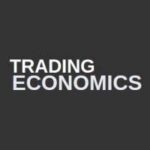
Author: Ana Milojevik
Independent Freelance Author
Abstract:
This article provides an in-depth review of Trading Economics, a leading online platform offering extensive economic data and forecasts from over 200 countries. It explores the platform’s key features, including customizable dashboards, real-time updates, and comprehensive economic indicators. The article highlights how traders, investors, and policymakers utilize Trading Economics to make informed decisions, identify market trends, and develop effective financial and policy strategies.
In the modern age of global finance, data-driven decision-making is paramount, and trading economics has emerged as a pivotal player in providing accurate, timely, and comprehensive economic data to traders, investors, and policymakers alike. In this article, we’ll take an in-depth look at Trading Economics, exploring its features, the value it offers to users, and its role in shaping financial strategies and policy decisions.
The Essence of Trading Economics

Trading Economics is an online platform that offers a wealth of economic data, indicators, and forecasts from around the world. Founded in 2010, the platform has become a go-to resource for professionals seeking to make informed decisions based on reliable economic information.
A Treasure Trove of Data
At the core of Trading Economics lies an extensive repository of economic data covering more than 200 countries. This data spans a wide range of categories, including macroeconomic indicators, exchange rates, stock market indices, inflation rates, and more. Users can access historical data, real-time updates, and future projections, allowing for thorough analysis and trend identification.
Key Features of Trading Economics
1. Comprehensive Coverage: Trading Economics covers a wide array of economic indicators, ranging from GDP growth rates and unemployment figures to consumer sentiment indices and manufacturing output.
2. User-Friendly Interface: The platform’s intuitive interface allows users to navigate through data effortlessly. Graphs, charts, and tables visualize complex data sets, making it accessible to both seasoned professionals and newcomers.
3. Customizable Dashboards: Users can customize their dashboards to track specific indicators and countries of interest, tailoring the platform to their needs.
4. Data Comparisons: The ability to compare economic indicators between countries provides valuable insights into global trends, regional disparities, and potential investment opportunities.
5. Economic Calendar: The economic calendar feature offers a snapshot of upcoming economic events, helping users anticipate market movements and plan their strategies accordingly.
Value to Traders and Investors

1. Informed Decision-Making: Trading Economics empowers traders and investors to make decisions grounded in reliable data, reducing the reliance on speculation and enhancing risk management.
2. Trend Identification: By analyzing historical data and indicators, users can identify emerging trends, market cycles, and potential turning points.
3. Currency Analysis: Forex traders can benefit from real-time exchange rate data, helping them gauge the strength of currencies and make more accurate predictions.
4. Investment Insights: Investors can use economic indicators to assess the health of economies and industries, aiding in portfolio diversification and allocation.
Influence on Policymakers
Trading Economics also plays a crucial role in informing policy decisions. Governments, central banks, and international organizations rely on the platform’s data to formulate monetary, fiscal, and trade policies that promote economic stability and growth. The platform provides a common ground for policymakers to assess the global economic landscape and collaborate on solutions.
Conclusion
In an increasingly interconnected and data-driven world, Trading Economics stands as a beacon of economic insight. Its ability to consolidate vast amounts of economic data into a user-friendly format benefits traders, investors, policymakers, and researchers alike. By providing accurate and timely information, Trading Economics shapes the strategies of financial professionals and influences the policies that drive economies forward. As the world of finance continues to evolve, platforms like Trading Economics play a pivotal role in transforming data into actionable intelligence.
Frequently Asked Questions (FAQ)
1. What is Trading Economics?
Trading Economics is an online platform that provides comprehensive economic data, indicators, and forecasts from over 200 countries. It offers historical data, real-time updates, and projections for a wide range of economic metrics.
2. Who can benefit from using Trading Economics?
Traders, investors, policymakers, researchers, and financial professionals can all benefit from Trading Economics. It helps users make data-driven decisions, analyze market trends, and understand economic conditions worldwide.
3. What types of economic data are available on Trading Economics?
The platform covers macroeconomic indicators such as GDP growth, unemployment rates, inflation, exchange rates, stock market indices, consumer sentiment, manufacturing output, and much more.
4. How does Trading Economics help traders and investors?
By providing reliable, up-to-date economic data, Trading Economics enables users to identify market trends, manage risks better, analyze currency strength, and make informed investment decisions.
5. Can Trading Economics be used by policymakers?
Yes. Governments, central banks, and international organizations use Trading Economics to inform monetary, fiscal, and trade policies that promote economic stability and growth.
6. Is the Trading Economics platform user-friendly?
Yes. The platform features an intuitive interface with customizable dashboards, charts, and tables that make complex data accessible to both beginners and experienced users.
7. Does Trading Economics provide real-time data?
Yes. Users can access real-time updates on key economic indicators and events, including an economic calendar to track upcoming market-moving announcements.
8. How accurate is the data on Trading Economics?
Trading Economics sources its data from official government statistics, central banks, and international organizations, ensuring high reliability and accuracy.
About the Author
Ana Milojevik is a seasoned business analyst and freelance writer specializing in finance, economics, and market trends. With a passion for translating complex economic concepts into clear, actionable insights, Ana helps readers navigate the dynamic world of global finance.
Her expertise lies in data-driven decision-making and the impact of economic indicators on trading and investment strategies. Ana’s work has appeared in numerous business publications, where she aims to empower traders, investors, and policymakers with knowledge to make informed choices.






Leave a Reply